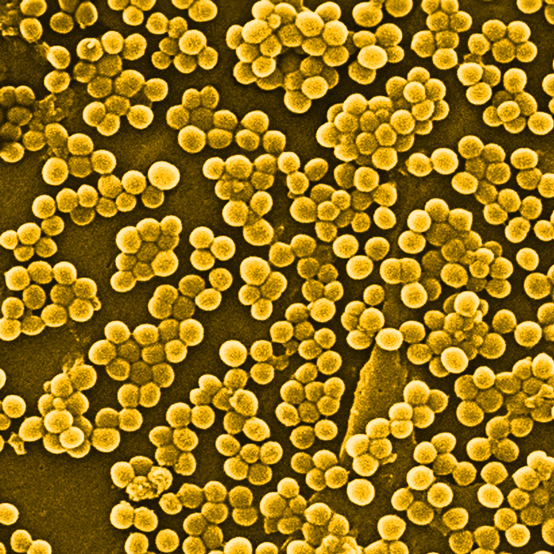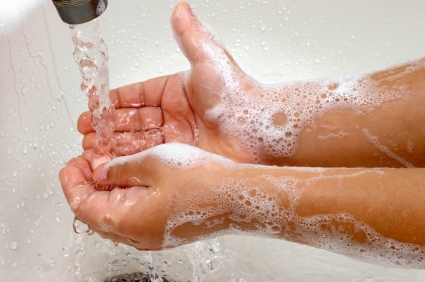
With the beginning of the winter youth sports season come injuries. Many common injuries, such as sprains, strains, fractures and concussions,1 are hard to prevent. Some injuries, however, including bacterial skin infections like Community-Acquired Methicillin-Resistant Staphylococcus Aureus (CA-MRSA), impetigo and folliculitis, are preventable - but only if athletes, coaches, and parents take common sense precautions.
Bad news/good news
The bad news is that skin infections have become a serious problem in wrestling,2 and that, while skin infections still rank well down the list of football injuries (knee, head/face, and ankle injuries are still the top three),1 outbreaks among football programs have become more common in recent years.
The good news is that outbreaks infecting an entire football program are preventable. Bacterial skin infections, especially MRSA, spread from athlete to athlete as a result of skin-on-skin contact, from sharing infected items in the locker room (such as towels, used bandages, or razors), or through contact with infected surfaces (hot and cold tubs, weight-training equipment, artificial turf). Taking steps to minimize or eliminate such skin-to-skin or surface-to-skin contact can keep infections from spreading from one football player to an entire 100-athlete program.
Practicing good hygiene
Here's what a skin infection prevention plan should include:
- Encouraging athletes to wash their hands and arms before and after practices and games with antibacterial liquid soap (not bar). If sinks are not available, athletes should be provided antibacterial gel or wipes containing chlorhexidine gluconate (CHG), which provide long-lasting protection from bacteria;
- Providing facilities, if at all possible, where athletes can shower;
- Regular cleaning and drying of sports equipment between practices and games;

- Covering all wounds with clean, dry bandages and checked by a physician if inflamed or painful;
- Discouraging athletes from sharing towels or other personal items (e.g. razors) with team mates; and
- Asking athletes to keep dirty practice and game uniforms and towels separate from clean clothing and towels in their lockers and gym bags and take the soiled clothing home in a separate bag for laundering.
Parents can help
To prevent skin infections, parents can:
- Encourage their child to take the same precautions against skin infections at home as they do at school, and
- Supply their child antimicrobial wash or wipes containing 4 percent CHG, which have been shown to kill bacteria for up to six hours.3, 4 Unlike alcohol-only gels, products containing CHG immediately kills bacteria on the skin, and also bond with the skin to provide ongoing protection without leaving a sticky residue. CHG wipes provide portability and convenience, especially when no sink is readily available and can be found in the first aid section of most drug stores.
Grant Doornbos, MD, is a resident in the department of anesthesiology at the University of Louisville Medical Center and a former NCAA Division I wrestler.
1. Safe Kids USA. (2009). Sport and Recreation Safety Fact Sheet . Retrieved July 27, 2010, from Safe Kids USA: http://www.safekids.org/our-work/research/fact-sheets/sport-and-recreati...
2. Comstock, D. (2010). National High School Sports-Related Injury Surveillance Study. Ohio: Center for Injury Research and Policy, Nationwide Children's Hospital.
3. Centers for Disease Control and Prevention. Guideline for Hand Hygiene in Health-Care Settings: Recommendations of the Healthcare Infection Control Practices Advisory Committee and the HICPAC/SHEA/APIC/IDSA Hand Hygiene Task Force. MMWR 2002;51(No. RR-16):[13-14].
4. Paulson, D. "Persistent and Residual Antimicrobial Effects: Are They Important in the Clinical Setting?" Infection Control Today (2005); 9.








